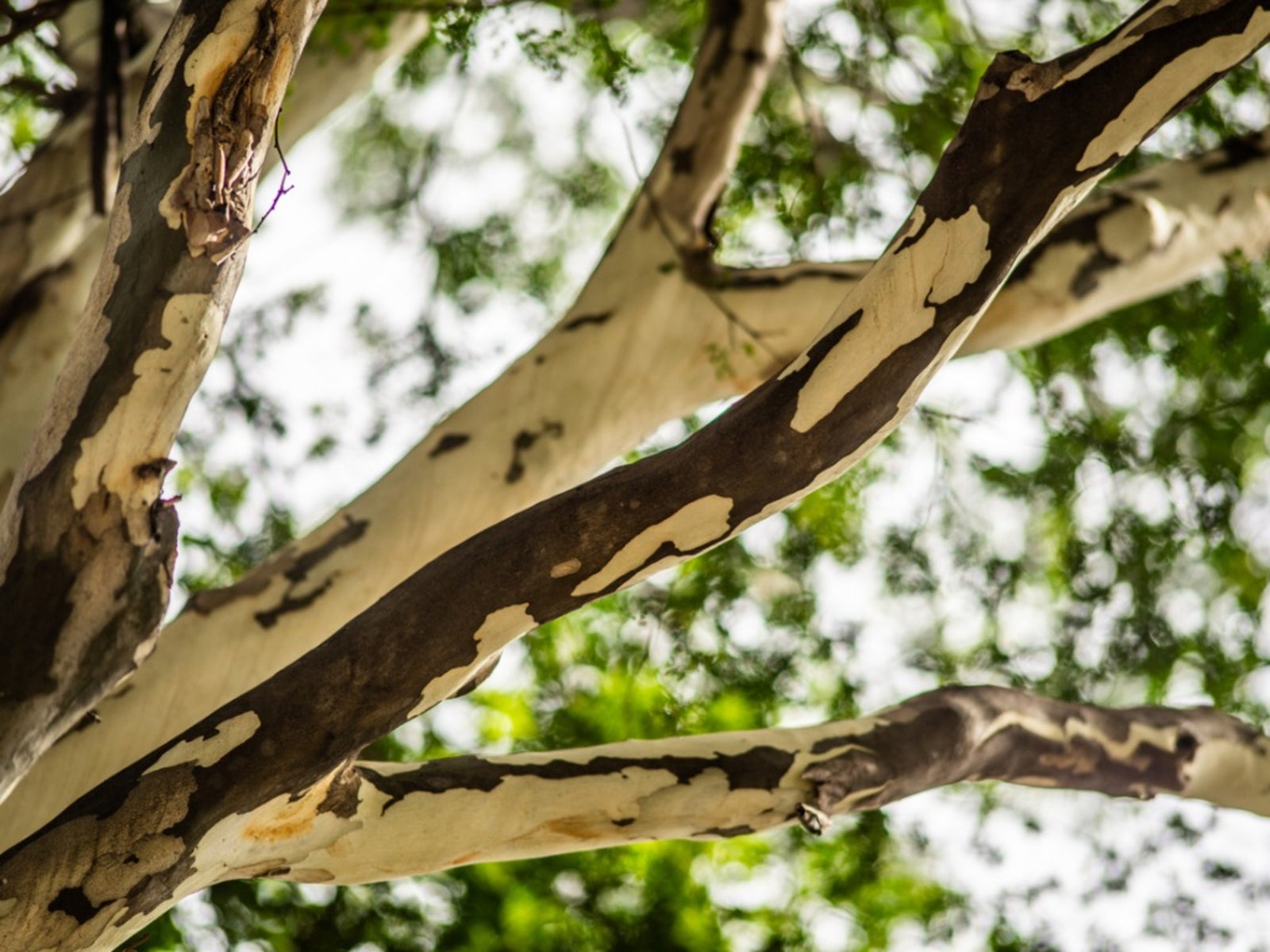Leopard Tree Care: How To Grow A Leopard Tree In The Landscape


What is a leopard tree? A leopard tree (Libidibia ferrea syn. Caesalpinia ferrea) has nothing to do with the elegant predator of the feline family other than its patchy dappled bark that looks like leopard print. These slender, semi-deciduous trees are lovely additions to a garden. For more leopard tree information, including the basics of leopard tree care, read on.
What is a Leopard Tree?
Something about this exotic tree with feathery foliage makes you think of Africa. Leopard tree information says it’s native to Brazil. The leopard tree has an open crown, and its groups of small, thin leaflets provide light to moderate summer shade. The tree also offers panicle spikes of sunny yellow flowers at the stem tips. The tree’s best feature, though, is its smooth, mottled trunk, and ivory bark with brown or gray patches. It peels as the tree matures, increasing the effect. The bark is the basis for the common name, the leopard tree.
How to Grow a Leopard Tree
Leopard tree growing information suggests that you plant this tree in moderate to tropical climates. Be forewarned: the climate will have a definite effect on the stature of the tree. Plant it in a location with a wet, subtropical climate like eastern Brazil, and the leopard tree grows to 50 feet tall (15 m.) or even higher. For those in moderate climates with a touch of frost, it generally stays a lot more diminutive. Ideal leopard tree growing conditions include a sunny site, adequate irrigation, and fertile soil. You can grow a leopard tree by using its own seeds. Leopard trees’ hard seedpods do not crack open when mature. In fact, they won’t open at all unless you hammer them apart. Once you do, the hardest part is behind you. Scarify the seeds and soak them in water. They are then ready to go into the soil and will sprout within a few days.
Leopard Tree Care
Although the trees are known to be drought-resistant, they grow faster and healthier with regular water. So, make water a regular part of leopard tree care. Another helpful tip when it comes to caring for a leopard tree involves pruning. The crotch angles are narrow, so early pruning is useful to help the tree develop a single leader trunk. For your own sake, make sure your leopard tree growing conditions do not include proximity to house foundations, underground cables, or sewer systems. The roots are strong and invasive.
Sign up for the Gardening Know How newsletter today and receive a free copy of our e-book "How to Grow Delicious Tomatoes".

Teo Spengler is a master gardener and a docent at the San Francisco Botanical Garden, where she hosts public tours. She has studied horticulture and written about nature, trees, plants, and gardening for more than two decades, following a career as an attorney and legal writer. Her extended family includes some 30 houseplants and hundreds of outdoor plants, including 250 trees, which are her main passion. Spengler currently splits her life between San Francisco and the French Basque Country, though she was raised in Alaska, giving her experience of gardening in a range of climates.